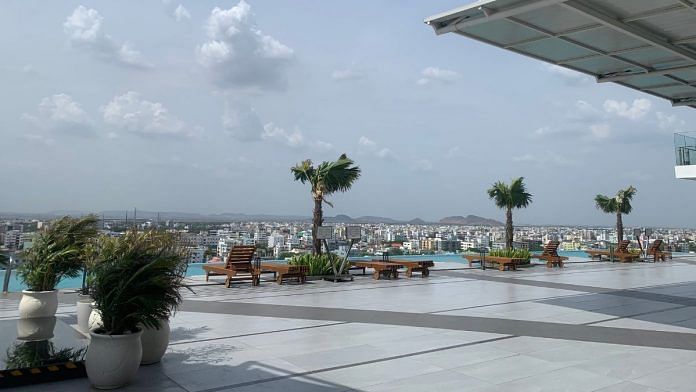Anuj Jain, a real estate agent in Gurugram’s DLF Phase 2, sums up his clients’ demands in two words that echo through his basement office: foreign amenities. A luxury apartment straight out of a shiny catalogue, with plunge pools, spas, ice-skating rinks and ballrooms. These heady constructions, with their hyper-connected condos, now dot the urban sprawl at the edge of every city, bringing to life the high-rise Indian middle-class desires.
It’s a boom everyone wants to get in on. “For every 100 clients, there are 1,000 dealers,” says Jain about the rapid rise in demand.
But the result is a push and pull between the urgency for green and sustainable architecture and a rising aspirational middle class that values excess and wants Italian marble, Roman arches and glass facades. The overwhelming demand means that architects and engineers, even those who want to experiment with new technology, are following the business-as-usual model using heavy-duty construction material.
This tension at the heart of the Indian construction industry also mirrors the crossroads the country is at. Unlike the West, especially European nations, construction work in India relies heavily on steel, glass, and aluminium. But with two-decade-old building codes and energy conservation ethics, the industry is now pushing back to balance conspicuous consumption with energy-efficiency laws.
And high rise-structures packed with people are a stark contrast to the inability of the housing sector to meet the demand.
“There is no pressure to be frugal, and no compulsion to be sustainable,” says Rahul Mehrotra, Chair of Urban Planning and Architectural Design at Harvard University.
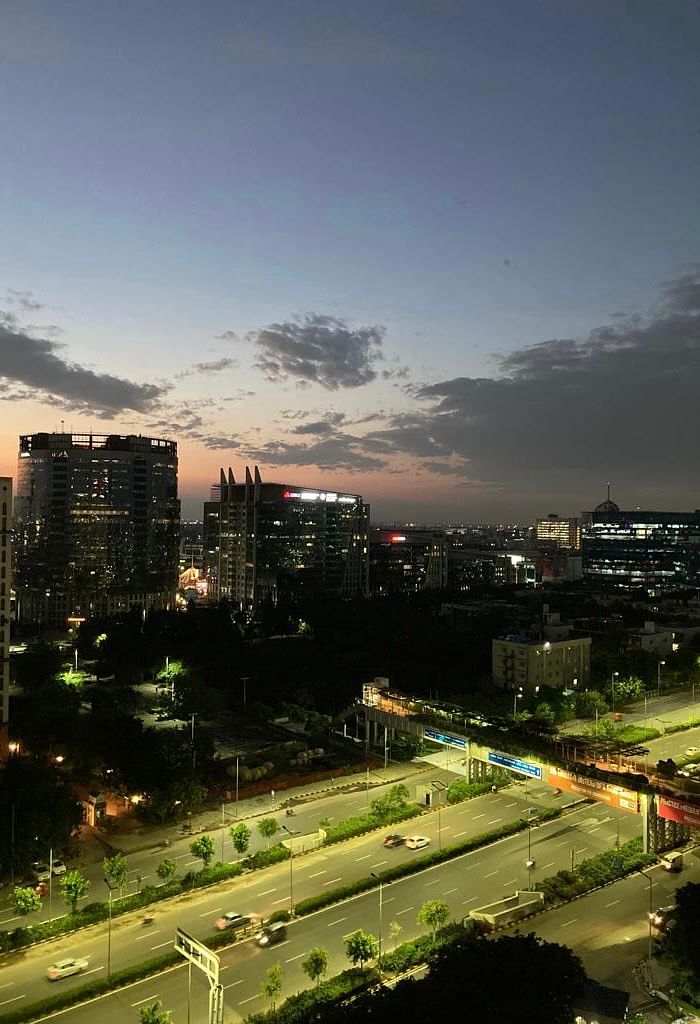
Also read: Andhra Pradesh is bracing for a school revolution—Byju’s tablets & bilingual textbooks
Tyranny of aspiration
Middle-class, urban aspirations are palpable in cities, rendered alive through their residential and commercial spaces. A giant billboard en route to the airport in Hyderabad entices motorists with a slice of colonial splendour: “Buy a piece of London in Hyderabad. Four BHK British-style villas.” Corporate hubs and tech centres in Gurugram, Noida, Bengaluru, and Hyderabad may even be ‘gaining’ on the West.
“Driving up the flyover, I feel like I’m in Manhattan,” says a resident of Hyderabad’s Gachibowli–– once understood to be the back of beyond. “Who lives in Gachibowli?” he had asked at the time of moving.
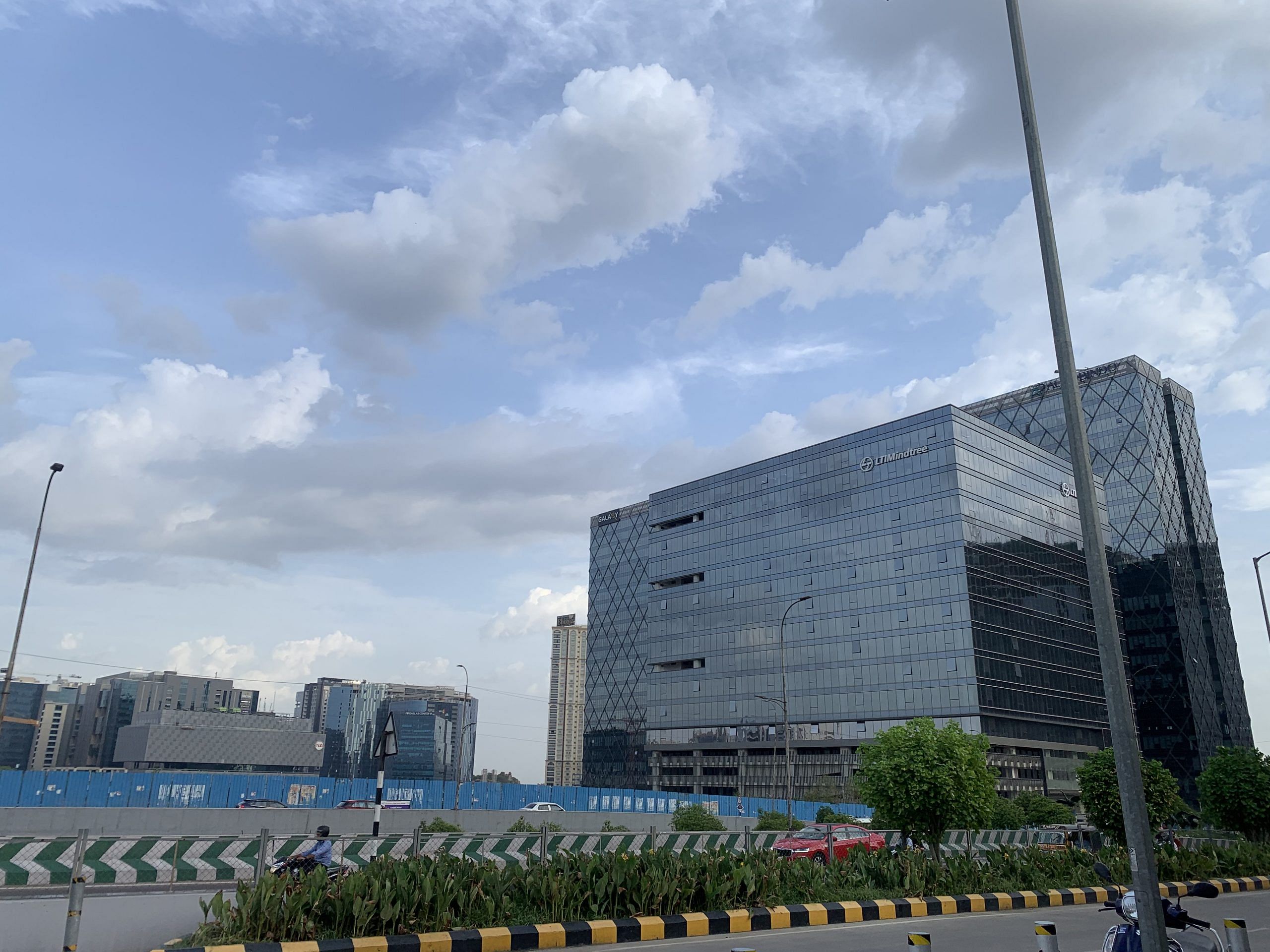
Mehrotra captures this sense of being, the “architecture of an impatient capital”, which changes as it spreads.
“The tyranny of images drives the way our cities begin to look. Shanghai aspires to be like Singapore, and Mumbai, like Shanghai. And then Nashik aspires to be Mumbai,” he says, alluding to a vicious, endless cycle.
Civil engineer turned builder Manish Kumar’s business card has the New York skyline on it. He operates out of an easily-missable basement in Gurugram amid several stand-alone houses that have been torn down and are being reconstructed as identical builder flats with a glass exterior, wood panels and marble flooring.
He takes pride in the AAC blocks—they’re about 30 per cent lighter than bricks—the RMC (Ready Mixed Cement) cylinders that aren’t labour intensive, and the 1.4-kilowatt solar panels that are compulsory in Huda City Centre. Kumar uses between 4 and 5.5 kgs of steel per square foot. But these tried and tested tools of the trade are not pushing the edges of innovation.
These mammoth towers that promise to change the skyline are the favourite kid on the block, replacing the culture of stand-alone houses and bungalows in urban sprawls. But they are still trapped in the past. Net-zero steel is the way forward; AAC blocks are a product of the 1930s, and engineers are researching sustainable construction materials and green decarbonated concrete.
“We are not exploiting technology in any innovative ways. Most of our buildings are using technology of the past,” says renowned New Delhi-based architect Gautam Bhatia. “Bricks are still being piled, laid by hand.”
Luxury condos offer the illusion of choice.
More often than not, builders and architects rely on what Anumita Roy-Chowdhury, executive director at New Delhi’s Centre for Science and Environment, calls “a cookie cutter approach.” They cut corners. The walls are thin. There is an overuse of materials and an absence of aesthetic. But at least there is a modular kitchen.
“The buyer goes wherever there is luxury,” says Chandra Rajwani, who works at Torbit Realty, a real-estate consultancy firm in Gulshan One29, a luxury retail-cum-office space in Greater Noida. It’s an expanse of the country’s new definition of modernity with ornamental plants, manufactured patches of green amid a sea of marble and a concierge who greets you behind a gold, metallic ‘G’ logo. It also boasts of a ‘temperature-controlled environment’ –– designed to maintain its frigid temperatures, regardless of external climatic conditions.
Central air conditioning is a paragon of wealth today. It represents the marvels of technology and the ease of luxe life. Apartments in new and cushy high-rises no longer come fitted with fans; they are appendages, not priorities.
Rajwani is nonchalant. Open spaces and clean air are the trendy buzzwords that align with an eco-friendly way of life, but a consumer would never ask to install solar panels or equipment for rainwater harvesting.
“And thus, you cannot use the climatic advantages of the building to be comfortable. Thermal comfort needs to be central to the planning to reduce the air conditioning hours and energy consumption,” says Roy-Chowdhury. Thermal comfort must be obtained at the design stage, not through technology. “This is what is creating a problem today.” New, supposedly state-of-the-art buildings by dominant builders like Gulshan and DLF enclose you in a vacuum where one is impervious to the outside world. Gulshan One29’s “temperature-controlled environment” is an example of this.
The overuse of unsustainable and outdated building materials and aesthetic are the established best practices nobody is willing to question or break out of.
“Ninety-five per cent of green construction materials aren’t available in India,” says Shekar Reddy, former national president of the Confederation of Real Estate Developers Association in India (CREDAI). He now heads the Indian Green Building Council, under which 682 commercial buildings have been registered.
However, there are a few architects and engineers who are pushing back. There is innovation, but like everything, India is the graveyard of pilot projects. Nothing goes for volume.
One of Sanjay Prakash’s first projects was New Delhi’s Mirambika—Free Progress School, whose ethos is reflected in its mud-made façade. But the resurgence of community-driven architectural techniques that are technically more suited to the Indian environment is yet to occur on any meaningful scale, says Prakash, who runs Studio for Habitat Futures (SHIFT), one of the frontrunners in community-driven architectural techniques. Even though his firm engaged in sustainable architecture long before it morphed into a fashionable phrase a decade ago, his clients require convincing and hand-holding in order to use materials that are less wasteful, like bamboo, mud or fly ash.
“Clients come with an idea of sustainability. We have to educate them. Very few of them will actually think of going with buildings made from mud,” he says.
Architectural innovation and the return to tradition have a space in India’s cities, but they exist in silos.
Along the Jaipur-Ajmer highway stands the Central University of Rajasthan. A coalescence between traditional materials and modern design, it evokes solidity. An urban anomaly in an arid landscape, Dikshu C Kukreja, managing principal at CP Kukreja Architects have made use of simple architectural techniques that provide respite from the climate: jaalis, chhajas [balconies], chhatris [umbrellas], and johads [earthen dams]. It is not a building that encloses you in–– it opens out.
Also read: Aliens in Ajanta, Sita in Peru. Red FM show is rewriting Indian history, Hinduism
Made of steel
By 2050, 850 million people will be living in Indian cities, and between 40 and 50 per cent of this building stock is yet to be constructed. Our cities, Mehrotra says, have witnessed a high-rise, high-density way of life where people are sandwiched into cloistered spaces.
“The high-rise, high-density mode of building is intrinsically wasteful. A low-rise, low-density model can be more sustainable. One can build more incrementally,” says Mehrotra.
This urban exodus comes with a housing demand, which sits hand-in-hand with the demand for construction materials. “That in itself is going to create enormous pressure on the environment that you are mining,” says Roy-Chowdhury.
A conventional building is made from reinforced concrete, in which steel is embedded. There is also steel that is exposed. It is a wasteful, dated construction technique that originated in the West. New York’s Chrysler Building, an art-deco style ode to the city—touted as Manhattan’s “favourite skyscraper”—has a stainless steel crown and a steel frame. It was called an emblem of modernity. But it was made between 1928 and 1930. Similarly, much of the West’s construction occurred in the previous century. A country like India faces a radically different scenario where a lot is still to be built.
In Europe, wood is steadily gaining popularity as a construction material, codified in the Renovation Wave strategy.
Steel production accounts for 27 per cent of the carbon emissions of the global manufacturing centre and 10.5 per cent of total global carbon emissions worldwide. According to civil engineer Abhay Gupta, a conventional reinforced concrete building uses between 4 kg per square foot to 8kg per square foot of steel. This includes the foundation and pillars. If beams, columns and floor systems are made of steel –– between 6 and 10 kg of steel is needed per square foot.
Steel is costly and inefficient because it corrodes easily, so it must be replaced often. And most of its energy footprint comes from production. In 2020, Tata announced plans to revolutionise the steel production industry with a new process that results in “enormous efficiency gains,” but green steel is still not on the cards for India.
But even so, Gupta is certain. “We will not specify green or not green. We will only specify strength,” he says.
“Steel consumption is at the same levels as it was in the 1980s,” rues Prakash.
Bhatia, too, is constrained by the aspirations of his affluent clients.
“Most of them want farmhouses or office buildings, leaving 90 per cent of architecture [styles and techniques] bereft and forlorn,” he says. The focus of the housing system and architects is on the wealthy, and low-cost housing has been neglected in the process or ceded to the welfare sector. There are individual projects of great value.
For low-cost housing in urban areas, the government introduced the Pradhan Mantri Awas Yojana in 2015, which gave builders incentive for low-cost housing, but made no room for eco-friendly or green measures. The scheme was supposed to end in 2022 but was extended for another two years.
Matching the demand with housing supply is a Herculean challenge, and Roy-Chowdhury says that doing it with circularity, less waste and with materials that have minimal embodied energy requires “a huge amount of awareness building.”
Andhra Pradesh, Telangana and ECBC
Two months ago, the freshly minted Dr BR Ambedkar Telangana Secretariat won the Indian Green Building Complex Award. An imposing presence topped with domes, it is 265 feet tall with 635 rooms. Domes are naturally resistant to hostile weather conditions, and protect from natural disasters. The state government was praised for constructing “state-of-the-art facilities and being environmentally friendly.”
Telangana and Andhra Pradesh are well ahead of the green curve. In 2014, when it was at the cusp of bifurcation, Andhra Pradesh was the first state in India to implement the Union government’s Energy Conservation Building Code (ECBC). The code calls for commercial buildings to install renewable energy systems, cool roofs and double and triple-glazed glass.
As a result, the green building code was implemented simultaneously and similarly in two states. Over 600 buildings in Telangana are ECBC compliant, while in Andhra Pradesh, they are about 800.
Andhra Pradesh’s first ‘super ECBC building’ is under construction in Vishakhapatnam. It will consume 50 per cent less energy, is “an ideal model”, and will be ready in nine months. An ordinary ECBC building saves about 25 to 30 per cent of energy.
“Super ECBC buildings can easily become net zero in energy consumption,” K Vijayanand, Special Chief Secretary (Energy), had remarked.
The informal competition between the two states has spilled onto the energy sector as well. In Telangana, Neelam Janaiah, Chairman of the Telangana State Renewable Energy Department Corporation (TSREDC) is sceptical of the Andhra Pradesh Super ECBC building.
“Ours is the real Super ECBC building. They have not been granted [permission] officially,” he says. There is only Telangana. Andhra Pradesh is second.
However, there could be issues with the codes itself. “Building norms have not been upgraded for many years. AC norms have been upgraded 7 times [in the same amount of time]. We have not seen the same for buildings,” says energy expert Ajay Mathur, currently director of the International Solar Alliance.
The ECBC’s inclusion in the state’s Municipalities Act also changed things for both states, which saw more people stepping up to make green buildings.
Initially, builders pushed back, but eventually, it became Telangana’s success story.
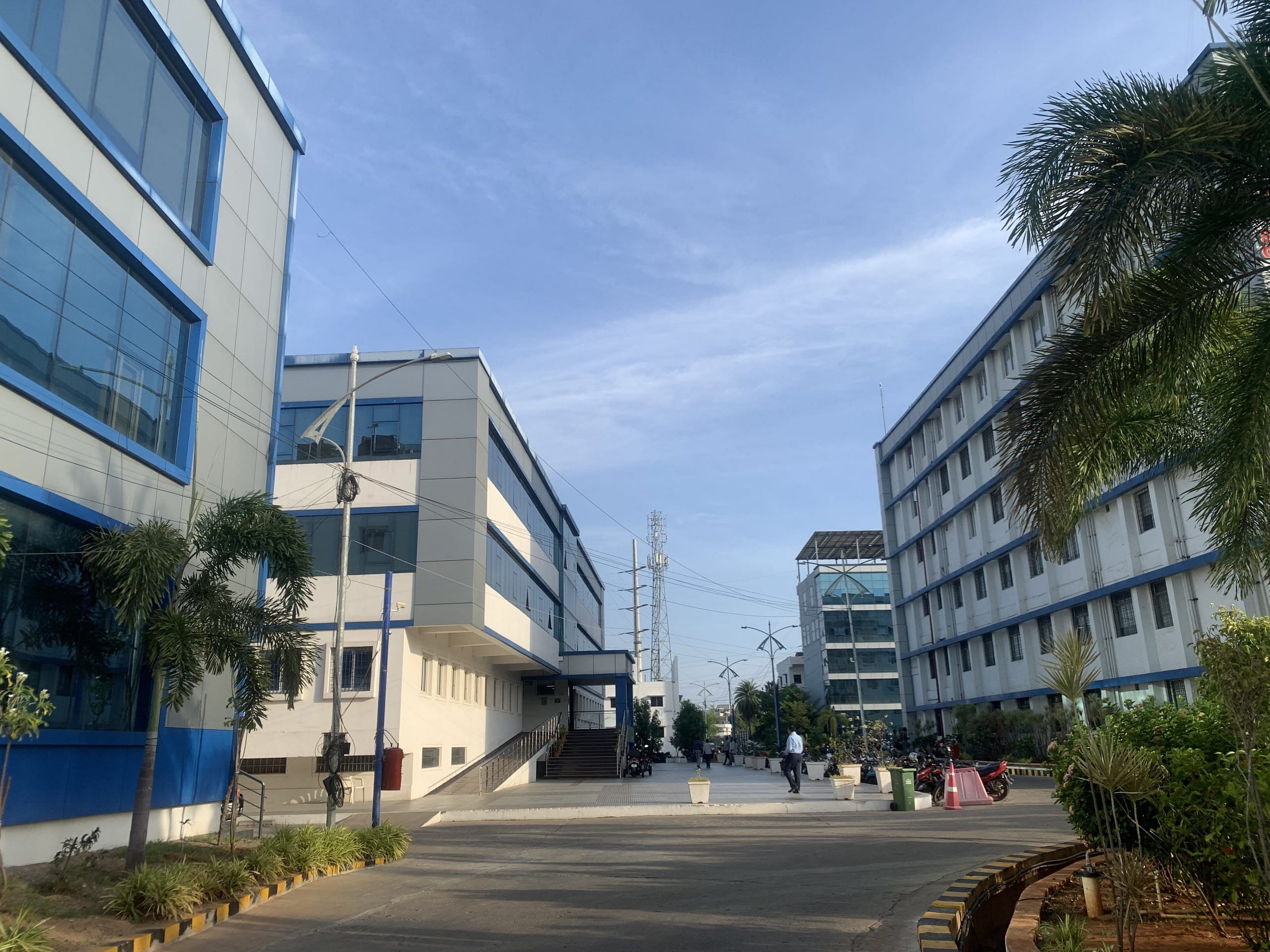
Shravan Kumar Agdichetty, a sustainability consultant with the ECBC cell in Telangana, attributes the success to the fact that the norms aren’t stringent, and plenty of leeway is given. What is compulsory is adequate daylight, provisions for a renewable energy system, a cool roof, and spaces that aren’t naturally ventilated need to be sealed or “weather-stripped.” The construction materials can remain as is.
In both states, the ECBC was notified in 2014, but it came to fruition in 2018. This also means, as Agdichetty points out, that “there are many at the design stage, but not at [the] occupancy stage.” The builders find the daylight requirement challenging.
ECBC for commercial buildings has now been notified by almost all states. In the case of Delhi-NCR, mechanisms for energy-efficient design and construction are in the building by-laws. Building rating systems like GRIHA (Green-rating For Integrated Habitat Assessment) and US-based LEED (Leadership in Energy and Environmental Design) are gaining traction in India. GRIHA incentivises builders for energy conservation based on how many stars they score ––one being the lowest and five the highest.
When it comes to energy-saving, most builders are in the clear. Even one star under the Telangana and Andhra Pradesh state rating systems indicates ECBC clearance. It amounts to 5 per cent of energy saving. However, builders still aren’t interested in applying for it as there isn’t enough incentive. They prefer alternatives like GRIHA, says Agdichetty.
This is all for buildings that are yet to come to life. For those which already exist, there is a void. Agdichetty says the ECBC cell is in the process of drafting a policy for buildings in the occupancy stage. He doesn’t know how the code has been received by builders, and they are yet to collate data for it. “We have no direct channel of communication with the builders,” he admits.
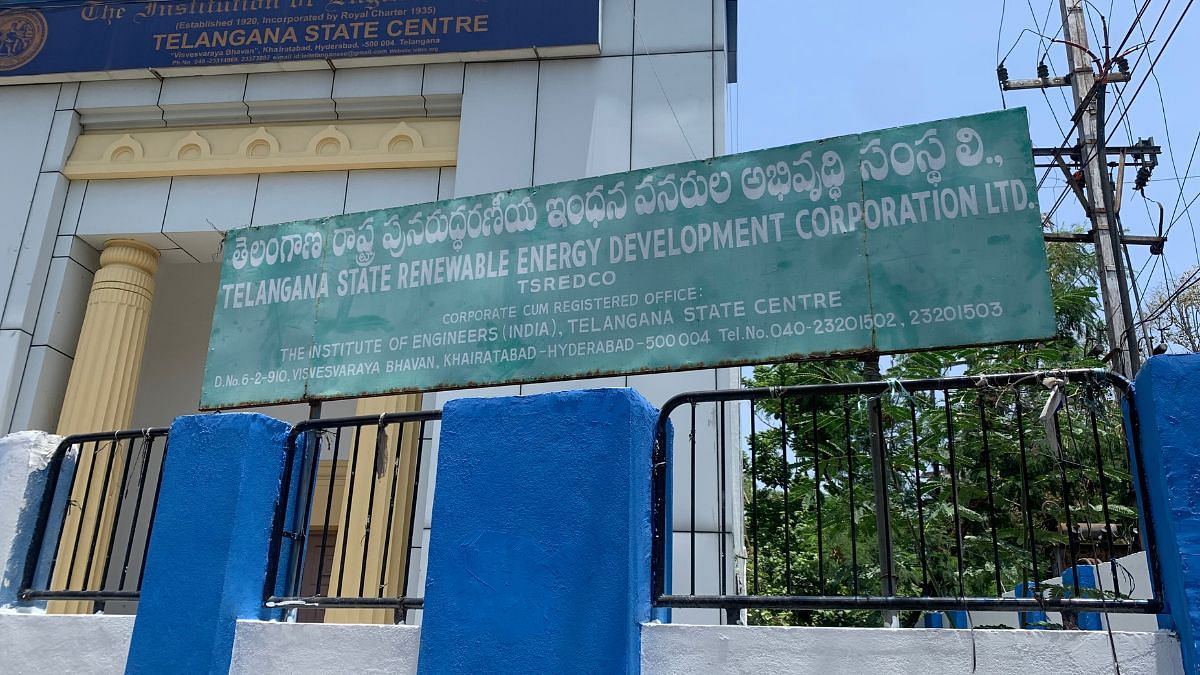
Also read: How we can reduce one-tenth global carbon footprint with ‘net-zero steel’
Green and expensive
Back in Gurugram, a city overrun with glass behemoths, one building glistens due to its sheer magnitude—DLF Cyber Park. The massive 11.8-acre “office ecosystem” has been packaged as a building belonging to the future.
What appears to be a box made of glass hardly yells sustainability –– but DLF Cyber Park has a four-star GRIHA rating, making it one of the greenest buildings in the country and an ideal example of the ECBC in action. It has all the mandatory features of an energy-compliant building: a cool roof, adequate daylight and the provision of renewable energy.

Glass is notorious for absorbing heat, but its green variations are available. DLF Cyber Park and its ilk “have chosen and invested heavily in the right kind of glass. Triple glazing with argon in it,” says Sanjay Seth, CEO of GRIHA. “It becomes a very good insulator.” Inside, there is Dreamliner glass. But, Seth, who was previously with the Bureau of Energy Efficiency and was part of the team that conceived the ECBC, says that the photochromatic lens used for this type of glass is expensive.
Somewhere or the other, architects, planners, and policymakers are beholden to the aspirations of a dynamic, upwardly-mobile group of people who are the commandants of capital.
“I try to convert my clients, but zero-carbon buildings are a long way off,” says Prakash.
(Edited by Ratan Priya)


